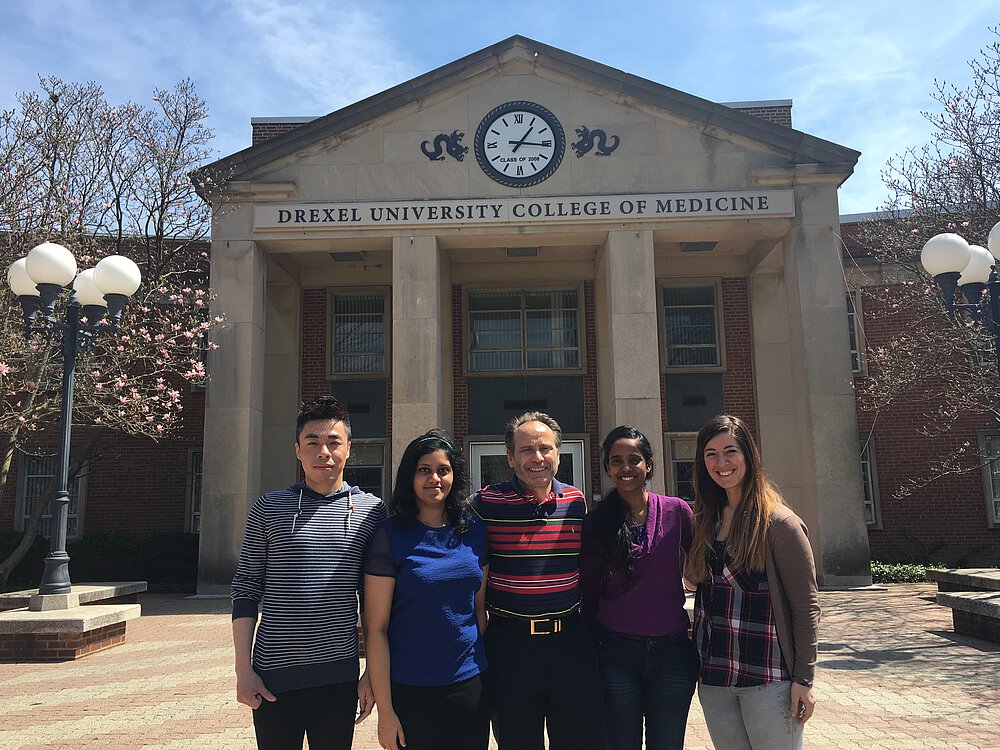Therapies for SPG4-HSP using a new genetic mouse expressing mutant human SPAST
Peter W. Baas, PhD Professor, Department of Neurobiology and Anatomy Director, Graduate Program in Neuroscience
College of Medicine Drexel University Department of Neurobiology and Anatomy 2900 Queen Lane Philadelphia, PA 19129 Tel: 215.991.8298 | Fax: 215.843.9082 | Cell: 215.880.4226 Email: pbaas@drexelmed.edu
drexel.edu/medicine/About/Departments/Neurobiology-Anatomy/Research/Baas-Lab/
Project Summary
Hereditary Spastic Paraplegia (HSP) is a neurodegenerative disease that results in muscle weakness and spasticity in the lower limbs due to degeneration of axons within the corticospinal tracts. The degeneration does not appear until affected neurons have made appropriate connections and have been functionally normal for years. Eventually, the affected neurons lose functional synaptic contacts and exhibit a dying-back neuropathy that begins in the distal region of the axon. The most common cause of HSP is mutations of SPAST, the gene that encodes for spastin, a microtubule-severing protein. Severing of microtubules is important because short microtubules have greater mobility than longer ones. Genetic analyses on the mutations in SPAST in HSP patients have led to the predominate view that haploinsufficiency is the molecular mechanism of the disease. In this view, axons degenerate because of insufficient microtubule severing. However, haploinsufficiency does not adequately explain why the disease is generally adult-onset or why the degeneration is confined mainly to the corticospinal tracts. Another potential explanation is that axonal degeneration results from gain-of-function toxicity of the mutated spastin proteins that accumulate in afflicted neurons. If this explanation is correct, effective therapies would be quite different from those based only on haploinsufficiency. To date, vertebrate models for the disease have catered only to the haploinsufficiency model. This grant proposal requests funds for the characterization of a new mouse model of the disease in which a human pathogenic mutated form of spastin has been introduced on an inducible expression system such that crossing the animal with various different Cre lines can induce expression of the pathogenic mutant spastin in different tissues of the body. When crossed with a universal Cre, the resulting animals (both homozygotes and heterozygotes) display adult-onset gait deficiencies as well as trembling that is similar to spasticity, all of which are reminiscent of the human disease and none of which are observed in SPAST knockout mice. These symptoms are more severe in males than females. In addition to characterizing this animal as a powerful new model for SPAST-based HSP, the proposed studies will test whether symptoms of the disease can be alleviated with drugs based on two different mechanistic gain-of-function hypotheses that are buoyed by preliminary data from Drosophila, squid, and cultured cells.
Prelimnary report
Hereditary Spastic Paraplegia: gain-of-function mechanisms revealed by new transgenic mouse
In order to develop therapies to treat Hereditary Spastic Paraplegia, the first step is to understand the cellular mechanisms that give rise to the disease. The most common gene mutated in the disease is called SPAST, which encodes for a protein called spastin. Most researchers in the field hypothesize that the disease is caused by not enough healthy spastin protein, but another possibility is that the mutant spastin protein might be causing unexpected problems. This is called “gain of function” because the protein is taking on new properties that are toxic to the system. There are several arguments against this view that have dominated the field, thus causing most researchers to seek therapies based on the “loss of function” hypothesis. Now, Dr. Peter Baas and his laboratory at Drexel University in Philadelphia have developed a new mouse model for the disease in which all of the normal spastin of the mouse is present and active, but mutant human spastin is added to the system. This animal displays an adult-onset walking defect as well as corticospinal nerve degeneration that are remarkably similar to human patients suffering from the disease. If the mouse spastin is taken away, the cellular symptoms are worsened, suggesting that “loss of function” also plays a role, namely to exacerbate the symptoms caused by “gain of function.” Thus, Dr. Baas and his team believe they are on the right track to understanding the complex pathways that cause the disease, as well as providing the community with a mouse model that can be used to test potential therapies.




